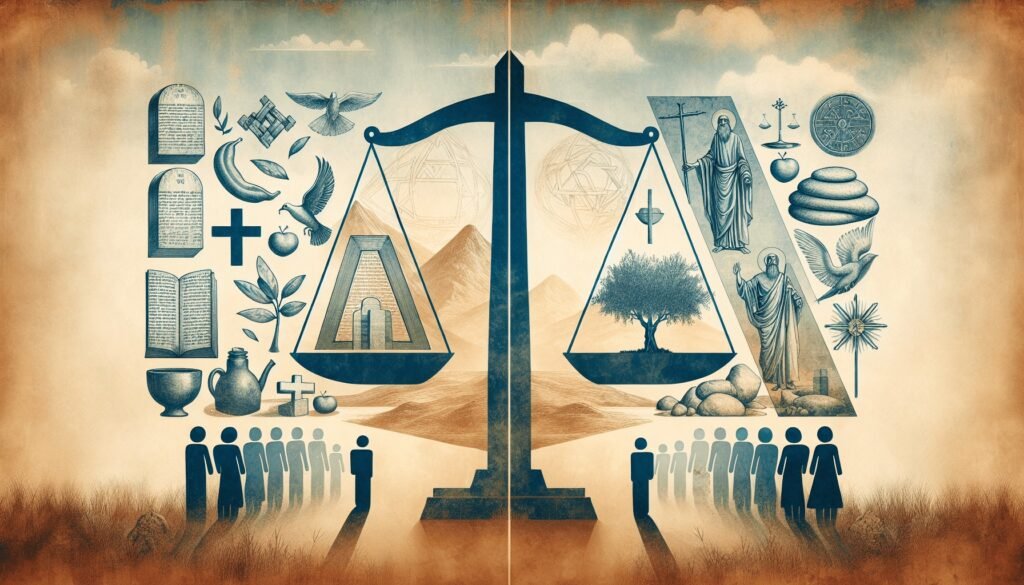Have you ever considered how the actions of a king could lead to the loss of sacredness in an entire community? It’s a profound thought, particularly when we examine the story of the Ark of the Covenant in connection with the idolatry of ancient kings. The delicate interplay between faith, leadership, and cultural practices unfolds a narrative that resonates even today.

The Context of the Ark of the Covenant
The Ark of the Covenant isn’t just an object mentioned in ancient texts; it’s a cornerstone of biblical history and theology. It’s described as a chest containing the tablets of the Ten Commandments, a symbol of the divine presence among the Israelites. You can imagine it as the ultimate artifact, revered but also vulnerable to the whims of human behavior.
Origins and Historical Significance
To understand the gravity of the Ark, it’s helpful to revisit its origins. Constructed according to divine instructions given to Moses, this gold-covered box represented God’s covenant with His people. It was used during their wanderings in the desert, a literal guide through uncharted territory.
- Historical Background:
- Construction: Built during Moses’ time, as detailed in Exodus 25:10-22.
- Symbolism: Represents God’s presence and His promise to the Israelites.
You might wonder why such a revered object becomes a pawn in the hands of certain kings. The story is more complex than it appears at first glance.
The Nature of Idolatry Among Kings
Idolatry in ancient Israel wasn’t just about worshiping wooden or stone figures; it encapsulated the broader themes of disobedience and misplaced trust. When kings strayed from the path ordained by the covenant, the repercussions were profound.
- Idolatrous Practices: Kings often turned to other deities, forsaking the worship of Yahweh.
- Consequences: Such actions invited calamities, illustrating a direct link between spiritual fidelity and societal health.
Your thoughts may lean toward the idea of how leaders shape collective belief. It’s a timeless theme, isn’t it?
The Story of King David and His Reverence for the Ark
King David is often regarded as a man after God’s own heart, but his reign had its share of complexities. His relationship with the Ark was particularly pivotal, highlighting both his reverence and, at times, his neglect.
Bringing the Ark to Jerusalem
David’s desire to bring the Ark to Jerusalem was significant. It was as if he were saying, “Let’s place God at the center of our community.” This act was more than a logistical decision; it was a heartfelt endeavor.
- Scriptural Reference: 2 Samuel 6 details the transport of the Ark and David’s joyous celebration.
- Cultural Impact: Establishing the Ark in Jerusalem symbolized centralizing worship, reinforcing communal identity and faith.
However, the celebration was shadowed by a tragedy when Uzzah touched the Ark and died— a moment illustrating the severe consequences of disrespect.
Lessons from David’s Mistakes
So, what did David learn from this incident? It taught him the importance of approaching the sacred with the utmost respect. His initial attempts were marred by ignorance of God’s instructions, but soon he corrected the course.
- Correct Protocol: After the incident with Uzzah, David ensured the Ark was carried according to divine commandments.
- Restoration of Reverence: David’s relationship with the Ark transformed into a deeper understanding of holiness.
You might find it fascinating how errors lead to enlightenment, don’t you?
The Idolatrous Path of Later Kings
As history progressed, the attitude towards the Ark shifted dramatically, reflecting broader societal changes. Kings like Solomon and later rulers commodified faith in ways that led to idolatry’s rise.
The Reign of Solomon
Solomon, known for his wisdom and wealth, also faltered into idolatry by marrying foreign wives who worshipped other gods, significantly impacting the nation.
- Building Temples for Foreign Gods: He constructed places of worship for deities like Molech and Ashtoreth.
- Decline in Worship: This shift diverted allegiance from the Ark, symbolizing the deterioration of the covenant relationship.
The juxtaposition of wisdom and folly creates an intriguing narrative arc, doesn’t it? Solomon’s lifetime was one of opulence and spiritual decline— a remarkable paradox.
The Impact of Idolatry and the Plagues
When a king strayed into idolatry, the repercussions weren’t limited to personal missteps. The societal fabric frayed, and calamity often followed.
Divine Retribution
The biblical narrative often describes how turning away from God’s covenant resulted in divine discipline. The incidents of plagues serve as stark reminders.
- The Philistines and the Ark: When the Philistines captured the Ark, they experienced plagues— a direct result of their disrespect towards the sacred object.
- Scriptural Evidence: 1 Samuel 5 outlines the afflictions faced by the Philistines because of their handling of the Ark.
The idea that spiritual unfaithfulness could lead to physical consequences evokes a modern parallel. You might see echoes of this in today’s world, where moral deviations lead to societal strife.
The Restoration of the Ark’s Purity
Ultimately, the return of the Ark marked a crucial point in Israel’s journey toward restoration. This process involved repenting, cleansing, and a renewed commitment to God.
Steps to Restoration
- Acknowledgment of Sin: Recognizing the idolatrous practices that led to suffering was vital.
- Repentance: Turning back to genuine worship was essential for reclaiming the Ark’s significance.
- Reestablishing Worship: Implementing proper worship practices restored the Ark’s revered status.
As you reflect on these steps, consider how relevant they are in contemporary contexts. The idea of returning to a purer state resonates particularly in times of crisis.

Archeological Insights into King’s Idolatry
Archaeological findings support many of the tales found within scriptural texts, revealing the tangible remnants of idol worship and the significance of the Ark.
Discovering Ancient Idols
Archaeologists have unearthed various idols that provide a glimpse into the worship practices of ancient nations, including Israel.
- Cultic Objects: Figurines and altars dedicated to Baal and Asherah reveal the extent of idolatrous worship.
- Significance: These findings underscore the struggle between monotheism and polytheism within ancient Israelite culture.
It’s intriguing to consider how these artifacts provide context to the narrative, giving a face to the struggles described in biblical accounts.
Sanctity of the Ark in Archaeological Discourse
Though the Ark’s physical existence remains a mystery, it plays a crucial role in discussions about faith, culture, and history.
- Cultural Symbol: Even absent, the Ark remains a powerful symbol in both Judaism and Christianity, representing divine promise and presence.
- Role in Society: It compels modern believers to reflect on their relationship with the divine, emphasizing a quest for purity in worship.
How fascinating it is that an object, perhaps lost to time, continues to inspire and provoke thought even today?
Theological Reflections on Restoration
Reflecting on the narrative of King’s idolatry and the Ark leads us to deeper theological discussions. What do these ancient stories mean for your modern faith?
The Importance of Covenant Relationships
At the heart of the Ark’s story is the theme of covenant— a bond between God and His people.
- Intention Behind the Covenant: It emphasizes faithfulness, trust, and a pathway to divine grace.
- Striving for Purity: Engaging in a process of purification can be seen as an ongoing journey for believers today.
Isn’t it comforting to feel connected to an ancient narrative that speaks directly to the challenges of today?
Restoration as a Continuous Process
Restoration isn’t simply a thing of the past; it’s a continuous endeavor. The stories of King David, Solomon, and the plagues illustrate this journey vividly.
- Lessons for Personal Faith: Each believer is called to reflect on their practices and ensure they align with their values.
- Community Involvement: Restoration often requires communal engagement, reminding us that we are part of a larger narrative.
Concluding Thoughts
The interplay between a king’s idolatry and the Ark’s purity restoration serves as a poignant reminder that leadership, faith, and society are intricately connected. By studying these ancient narratives, you can draw parallels between the past and present, recognizing the timeless themes of accountability, reverence, and restoration.
- Call to Action: Reflect on your own practices and beliefs. How do they align with the ideals of purity and faithfulness?
- A Modern Reflection: As you go about your daily life, consider how the lessons from these ancient stories can inform your personal and communal journeys.
Ultimately, the narratives surrounding the Ark of the Covenant offer profound insights—your connection to history, archaeology, and faith is more significant than you might realize. Whether through understanding the mistakes of past kings or celebrating the restoration of revered objects, the lessons of idolatry extend beyond mere artifacts; they become crucial to your spiritual formation and collective journey.


